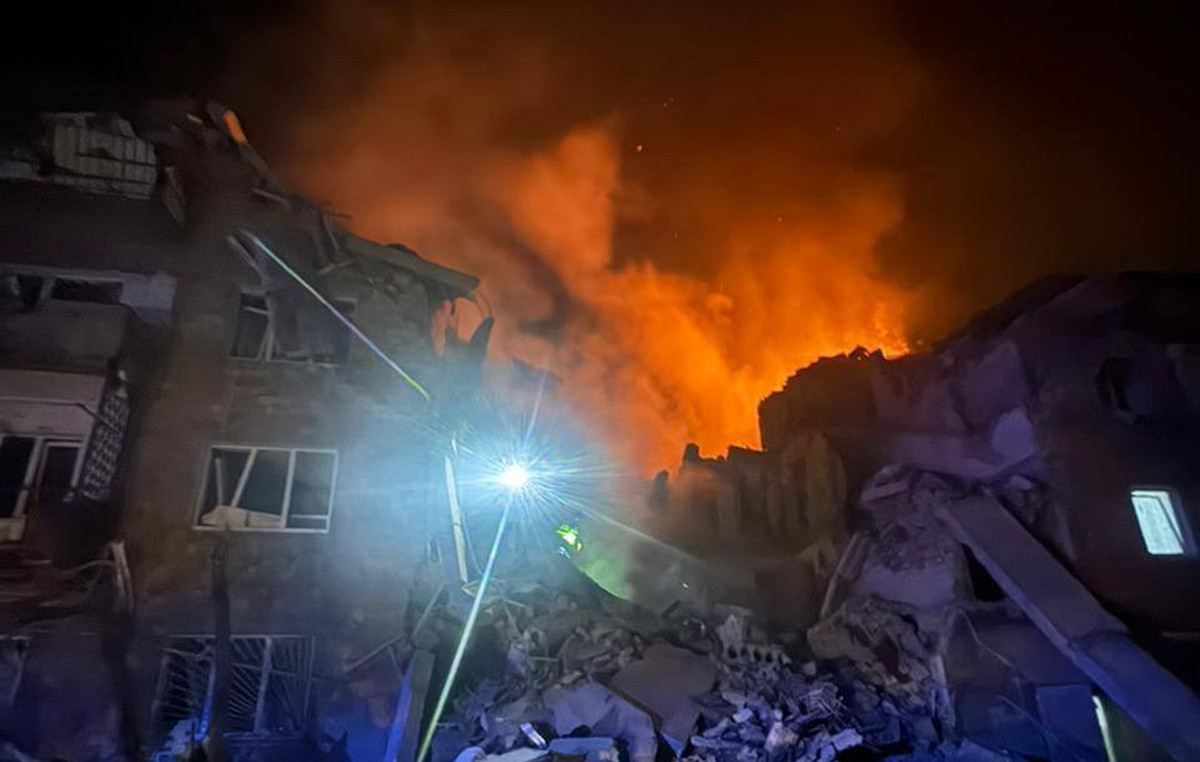There was a time when looking at the night sky it provided an escape from the man-made mess of Earth. Not now.
Almost 70 years after the launch of Sputnik there are so many machines flying in space that astronomers fear that light pollution will soon make it impossible to study others galaxies with ground-based telescopes.
There are also space junk : about 30 thousand objects larger than a softball are orbiting the Earth.
And after the National Oceanic and Atmospheric Administration (NOAA) used high-flying aircraft to collect samples from the stratosphere for the first time in history, new scientific data shows that the for-profit space race is changing the sky in measurable ways and with potentially harmful effects and consequences for the ozone layer and the Earth's climate.
“We can see the imprint of human space traffic in the stratospheric aerosol,” says Troy Thornberry, a research physicist at NOAA's Chemical Sciences Laboratory.
“Adding a large amount of material to the stratosphere that has never existed before is something we are considering, as is the large mass of material we have launched into space.”
Trash can affect launches and the climate
According to the study, 10% of particles in the upper atmosphere now contain pieces of metal from rockets or satellites that leave orbit and burn. As humanity increasingly relies on information from the sky, the report predicts that human-made debris will make up 50% of stratospheric aerosols in the coming decades, equaling the amount created naturally by the galaxy.
While it's unclear how this will affect the ozone layer — and a complicated climate system already in crisis — SpaceX's commercial switch from solid rocket boosters on NASA's space shuttles to kerosene, which powers the rockets, has added tons of new emissions. of fossil fuels with each launch, while aging satellites create clouds of debris as they leave orbit.
“We're talking about constellations of thousands of satellites, each weighing about a ton, and when they fall, they act like meteoroids,” Thornberry told CNN.
According to tracking website Orbiting Now, there are currently more than 8,300 satellites in orbit, and predictions about how many more will soon join them vary wildly.
More than 300 commercial and government entities have announced plans to launch an astonishing 478,000 satellites by 2030. The U.S. Government Accountability Office predicts that 58,000 satellites will be launched over the next six years.
Other analysts have recently estimated that the number of satellites reaching orbit will be closer to 20,000.
But even the lowest estimates would have been inconceivable after Neil Armstrong's breakneck pace. The 1972 “Blue Marble” photo of Apollo 17 may have inspired Earth Day, but few considered the orbital debris it created until 1979, when NASA scientist Donald Kessler published a paper titled “Collision Frequency of Artificial Satellites : the creation of a debris belt”.
Since then, “Kessler syndrome,” portrayed with appropriate suspense in the 2013 film “Gravity,” has been shorthand for the industry’s concern that too much space traffic will create a vicious cycle of more debris, causing even more collisions until launches become impossible.
In low Earth orbit, objects can collide at around 37,000 km/h, a speed fast enough for even the smallest debris to shatter the windows of the International Space Station. In total, there are an estimated 100 million pieces of artificial debris the size of a pencil tip spinning in orbit, posing a huge risk to doing business in space.
“Ten years ago, people thought our founder was crazy for talking about space junk,” Ron Lopez told CNN while walking through the Smithsonian Air and Space Museum in Washington (USA). “Now you can’t go to a space conference without there being a panel or a series of talks about space sustainability and the problem of waste.”
López is president of the North American subsidiary of Astroscale, a Japanese company vying for market share in the emerging field of orbital debris removal.
“In the gold rush, those who made the pickaxes and shovels tended to do better than the miners,” he explains. “And in a way, that’s exactly what we’re bringing to the market.”
López admits there is still a long way to go between flying garbage trucks, orbiting recycling centers and a “circular economy in space,” but in 2022, Astroscale used a satellite with a powerful magnet to capture a moving target launched into the sky. same space.
“It was the first commercially funded spacecraft to demonstrate many of the technologies that will be needed to dock and rendezvous with other satellites,” he said. “We may move them, refuel them or, in some cases, de-orbit them to solve the waste problem.”
A second astrological-scale mission, launched from New Zealand by aerospace company Rocket Lab on February 18, will take a closer look at space debris. The satellite, called “On Closer Inspection,” will observe the movements of a rocket stage that was left in low-Earth orbit in 2009. Astroscale's mission will use cameras and sensors to study the rocket's remains and figure out how to get it out of harm's way. orbit.
But in the midst of a painfully evident pollution crisis on land, at sea and now in space, one of Sputnik's most symbolic launches is scheduled for this summer, when scientists from Japan and NASA launch the world's first biodegradable satellite, made mainly made of wood.
One small step…
Source: CNN Brasil
Charles Grill is a tech-savvy writer with over 3 years of experience in the field. He writes on a variety of technology-related topics and has a strong focus on the latest advancements in the industry. He is connected with several online news websites and is currently contributing to a technology-focused platform.







